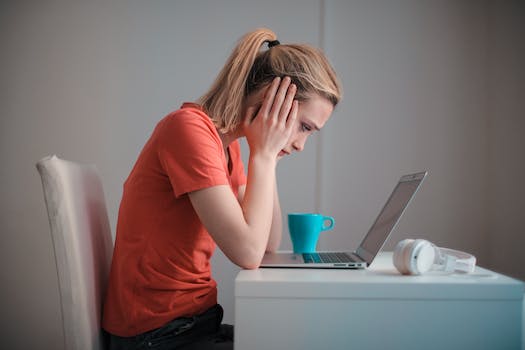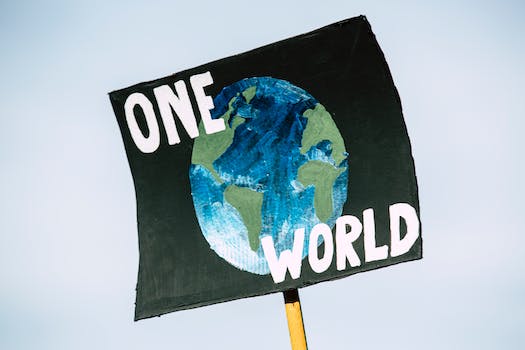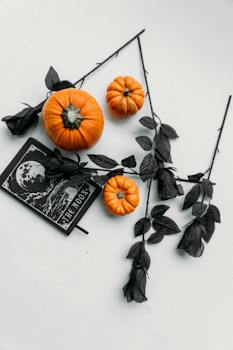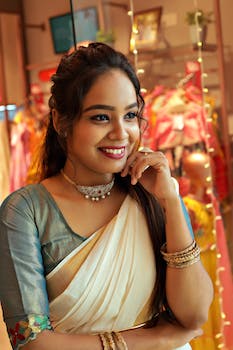

-
Table of Contents
"Unleash the Power of Color: Discover the Psychology Behind Interior Design Trends"
Introduction
Introduction:
Color psychology plays a significant role in interior design, as it has the power to evoke emotions, influence moods, and create a harmonious atmosphere within a space. Understanding the psychological impact of colors can help designers make informed decisions when selecting color schemes for various interior spaces. In recent years, interior design trends have embraced a variety of color palettes, ranging from bold and vibrant to calming and neutral. This article explores the fascinating world of color psychology and highlights some of the current interior design trends that incorporate these principles.
The Impact of Color Psychology on Interior Design
Color psychology plays a significant role in interior design, as it has the power to evoke emotions and influence our moods. The colors we choose for our living spaces can have a profound impact on our overall well-being and the atmosphere of the room. Understanding the psychology behind colors can help us create harmonious and balanced interiors that reflect our desired mood and style.
One of the most commonly used colors in interior design is blue. Blue is often associated with calmness, tranquility, and relaxation. It has a soothing effect on the mind and body, making it an excellent choice for bedrooms and spaces where we want to unwind and de-stress. Lighter shades of blue can create a sense of spaciousness, while darker shades can add depth and richness to a room.
On the other hand, yellow is a color that is often associated with happiness, energy, and optimism. It can instantly brighten up a space and create a cheerful and welcoming atmosphere. Yellow is commonly used in kitchens and dining areas, as it is believed to stimulate appetite and promote social interaction. However, it is important to use yellow in moderation, as excessive use can lead to feelings of anxiety and restlessness.
Green is another color that is frequently used in interior design, particularly in spaces where we want to create a connection with nature. Green is associated with growth, renewal, and harmony. It has a calming effect on the eyes and can help reduce stress and anxiety. Green is commonly used in bedrooms, living rooms, and home offices, as it promotes a sense of balance and tranquility.
Red is a color that is often associated with passion, energy, and excitement. It can create a sense of warmth and intimacy in a room, making it a popular choice for dining rooms and living areas. However, red is a powerful color that can also evoke feelings of anger and aggression if used excessively. It is important to use red as an accent color rather than the dominant color in a room.
Purple is a color that is often associated with luxury, creativity, and spirituality. It has a calming effect on the mind and can promote a sense of relaxation and tranquility. Purple is commonly used in bedrooms and meditation spaces, as it is believed to enhance spiritual awareness and promote a restful sleep. However, it is important to use purple in moderation, as excessive use can create a sense of gloominess and sadness.
In recent years, there has been a growing trend towards using neutral colors in interior design. Neutral colors such as white, beige, and gray are often associated with simplicity, elegance, and sophistication. They create a sense of openness and can make a room appear larger and more spacious. Neutral colors also provide a versatile backdrop for other colors and can easily be paired with different styles and accessories.
In conclusion, color psychology plays a crucial role in interior design. The colors we choose for our living spaces can have a profound impact on our emotions and overall well-being. By understanding the psychology behind colors, we can create harmonious and balanced interiors that reflect our desired mood and style. Whether we choose calming blues, cheerful yellows, or luxurious purples, the colors we incorporate into our homes can transform our living spaces into havens of comfort and beauty.
Exploring the Role of Color in Creating a Relaxing Home Environment
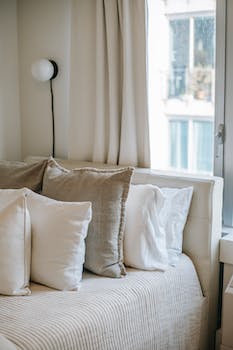
Color plays a significant role in our lives, influencing our moods, emotions, and overall well-being. This is especially true when it comes to our home environment, where we seek comfort and relaxation. Understanding the psychology of color can help us create a space that promotes tranquility and serenity.
When it comes to creating a relaxing home environment, it is important to choose colors that evoke a sense of calmness and peace. Soft, muted tones such as pastels and neutrals are often preferred for their soothing effect. These colors create a sense of spaciousness and tranquility, making them ideal for bedrooms and living rooms.
One popular color choice for creating a relaxing atmosphere is blue. Blue is often associated with calmness and serenity, reminiscent of the ocean or a clear sky. It has a cooling effect on the mind and body, making it an excellent choice for bedrooms and bathrooms. Lighter shades of blue, such as powder blue or sky blue, can create a sense of openness and tranquility, while darker shades like navy blue can add depth and sophistication to a space.
Another color that is often used to create a relaxing home environment is green. Green is associated with nature and has a calming effect on the mind. It is often used in spaces where we seek relaxation and rejuvenation, such as bedrooms and home offices. Lighter shades of green, such as mint or sage, can create a fresh and airy feel, while darker shades like forest green can add a sense of richness and tranquility.
Neutral colors, such as beige, gray, and white, are also popular choices for creating a relaxing home environment. These colors provide a blank canvas for other elements in the room and create a sense of calmness and simplicity. They can be used as a base color for walls and furniture, allowing other colors and textures to stand out.
In addition to choosing the right colors, it is also important to consider the lighting in a space. Natural light is often preferred for creating a relaxing atmosphere, as it is softer and more soothing than artificial light. Large windows and light-colored curtains can help maximize natural light and create a sense of openness and tranquility.
When it comes to current interior design trends, there is a growing interest in incorporating natural elements into our homes. This includes using earthy tones such as browns, terracotta, and warm neutrals. These colors create a sense of grounding and connection to nature, promoting a relaxing and harmonious environment.
In conclusion, color psychology plays a crucial role in creating a relaxing home environment. By choosing colors that evoke a sense of calmness and peace, such as soft blues, greens, and neutrals, we can create a space that promotes tranquility and serenity. Additionally, incorporating natural elements and maximizing natural light can further enhance the relaxing atmosphere in our homes. So, the next time you are redecorating, consider the psychology of color and current interior design trends to create a space that truly promotes relaxation and well-being.
Current Interior Design Trends: Incorporating Color Psychology for a Modern Look
Color plays a significant role in our lives, affecting our moods, emotions, and overall well-being. It is no wonder that color psychology has become an essential aspect of interior design. By understanding the psychological effects of different colors, designers can create spaces that evoke specific emotions and enhance the overall ambiance of a room. In this article, we will explore how color psychology is being incorporated into current interior design trends to achieve a modern look.
One of the most popular color trends in interior design today is the use of neutral tones. Colors like beige, gray, and white are often chosen for their calming and soothing effects. These neutral hues create a sense of tranquility and can make a space feel more spacious and open. By incorporating neutral colors into a room's design, designers can create a modern and minimalist look that is both timeless and elegant.
Another trend that is gaining popularity is the use of bold and vibrant colors. Bright hues like red, yellow, and blue can add energy and excitement to a space. These colors are often used as accent colors to create a focal point or to add a pop of color to an otherwise neutral room. By strategically placing bold colors in a room, designers can create a sense of drama and create a visually stimulating environment.
In addition to using specific colors, designers are also incorporating color psychology into their design through the use of color combinations. Complementary colors, which are colors that are opposite each other on the color wheel, are often used to create a sense of balance and harmony. For example, pairing blue with orange or yellow with purple can create a visually pleasing and harmonious color scheme. Analogous colors, which are colors that are next to each other on the color wheel, are often used to create a sense of unity and cohesiveness. By using color combinations that are pleasing to the eye, designers can create a modern and visually appealing space.
Texture is another element that designers are using to incorporate color psychology into their designs. Different textures can evoke different emotions and create a specific ambiance in a room. For example, smooth and shiny surfaces can create a sense of luxury and sophistication, while rough and textured surfaces can create a more rustic and cozy feel. By combining different textures with specific colors, designers can create a multi-dimensional and visually interesting space.
Lighting is also an essential factor in color psychology and interior design. The intensity and color temperature of light can significantly impact how colors are perceived in a space. Warm lighting, such as incandescent bulbs, can create a cozy and inviting atmosphere, while cool lighting, such as fluorescent bulbs, can create a more energetic and vibrant ambiance. By carefully selecting the type of lighting and its placement in a room, designers can enhance the effects of color and create a modern and visually appealing space.
In conclusion, color psychology is an integral part of current interior design trends. By understanding the psychological effects of different colors and incorporating them into their designs, designers can create spaces that evoke specific emotions and enhance the overall ambiance of a room. Whether it is through the use of neutral tones, bold and vibrant colors, color combinations, texture, or lighting, color psychology is being used to achieve a modern look that is both visually appealing and emotionally stimulating. So, the next time you are redesigning your space, consider the psychological effects of color and how it can enhance your overall design.
Q&A
1. What is color psychology?
Color psychology is the study of how colors can affect human emotions, behavior, and perceptions.
2. How does color psychology influence interior design?
Color psychology is used in interior design to create specific moods and atmospheres within a space. Different colors can evoke different emotions and can be used to enhance the functionality and aesthetics of a room.
3. What are some current interior design trends related to color?
Some current interior design trends include the use of neutral colors, such as whites, grays, and beiges, to create a calming and minimalist look. Additionally, bold and vibrant colors are being used as accent pieces to add pops of color and create visual interest in a space.
Conclusion
In conclusion, exploring color psychology can greatly enhance interior design trends. Understanding the psychological effects of different colors allows designers to create spaces that evoke specific emotions and moods. Current interior design trends often incorporate bold and vibrant colors to create visually stimulating and dynamic environments. Additionally, the use of neutral colors and natural materials remains popular, as they create a sense of calm and tranquility. Overall, the combination of color psychology and current design trends allows for the creation of aesthetically pleasing and emotionally engaging spaces.



